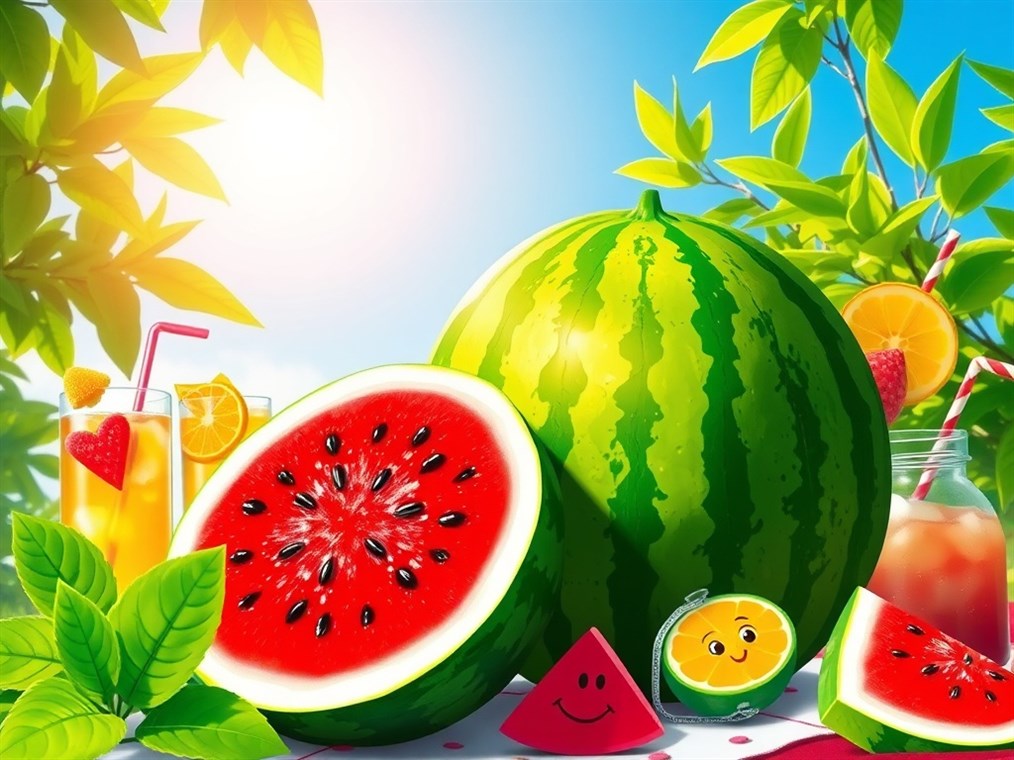The Watermelon’s Wild Ride: More Than Just a Summertime Treat
Okay, picture this: a hot summer day, the kind where the air shimmers and you’re desperate for something, anything, to cool you down. Enter the watermelon, right? That juicy, sweet slice of summer perfection. But have you ever stopped to wonder where this iconic fruit really came from? Turns out, the watermelon’s story is way more interesting than you might think, stretching back thousands of years and taking us on a journey across continents.
For a long time, everyone thought South Africa was the watermelon’s original home. But guess what? Recent studies are pointing the finger further north, towards Northeast Africa, specifically Sudan. Who knew?
From Bitter Beginnings to Sweet Sensations
So, how did we get from there to here? Well, it all started in Africa, where the watermelon’s wild relatives grew. Think of it like a family tree, with the Kordofan melon from Sudan possibly being the great-grandpappy of the watermelons we know and love. This melon shares a key trait with our domesticated watermelons – it’s not bitter! Other wild African melons? Not so lucky.
Archaeologists have been digging up clues, too. Imagine finding 5,000-year-old wild watermelon seeds in Libya! That’s like finding a time capsule. These seeds tell us that watermelons were hanging out in more places than we previously thought. And get this: a 2022 study even traced 6,000-year-old seeds from the Libyan desert all the way to Egusi seeds in Nigeria. Talk about a family reunion!
Now, here’s the kicker: those early watermelons weren’t exactly the sugary delights we bite into today. Nope, they were likely bitter, with a pale, yellowish-white flesh. So why bother growing them? Well, they were packed with water, which was a lifesaver in dry climates. The ancient Egyptians even stored them for those lean times, basically using them as edible water bottles. You can even spot images of watermelons in Egyptian tombs dating back to 2500 BCE. That’s some serious history!
But, over time, things changed. Farmers started picking the less bitter ones, the ones with slightly sweeter flesh. It was a slow process, but eventually, we started seeing sweeter watermelons emerge. By 200 AD, Hebrew tax records were even classifying them as sweet fruits. Progress!
Watermelon Goes Global
Fast forward a few centuries, and watermelons were making their way around the world. By the 7th century, they were in India, and by the 10th century, they’d reached China, where they were cleverly dubbed “melon-from-the-west.” The Moors brought them to Spain, and then European colonists packed them up and shipped them off to the New World.
By 1576, the Spanish were growing watermelons in Florida, and by 1629, they’d made their way to Massachusetts. It’s amazing how quickly they spread! Native Americans were also getting in on the action, growing them in the Mississippi valley and Florida.
Today, there are over 1,200 different types of watermelons being grown in almost 100 countries. From the white-fleshed ‘Cream of Saskatchewan’ to the Russian ‘Melitopolski’, the variety is mind-boggling. And let’s not forget the “Ancient Watermelon,” rediscovered in an Arizona cave, connecting us to watermelon farmers from way back when.
The Enduring Appeal of the Watermelon
So, the next time you bite into a juicy slice of watermelon, take a moment to appreciate its incredible journey. From its humble, bitter beginnings in Africa to its current status as a global summertime staple, the watermelon’s story is a sweet reminder of human ingenuity and the power of a little selective breeding. It’s more than just a fruit; it’s a piece of history.

